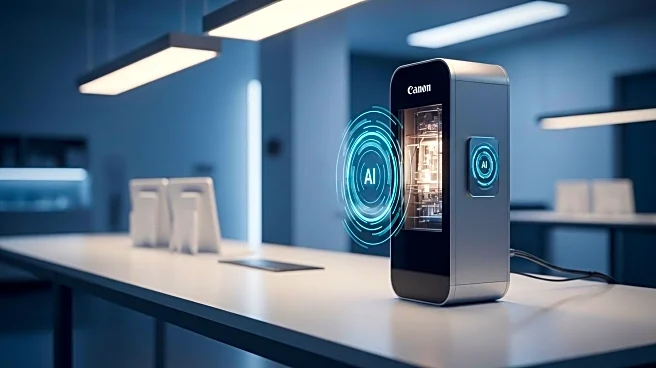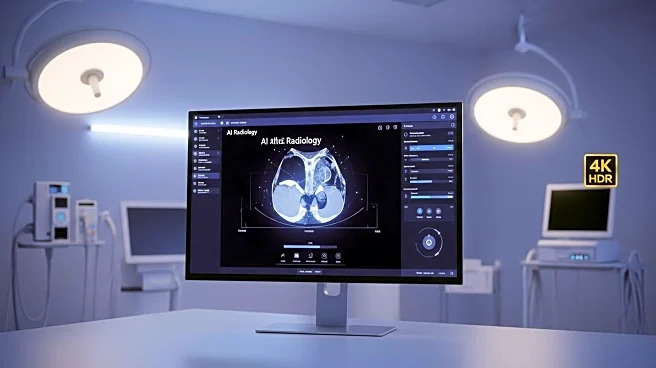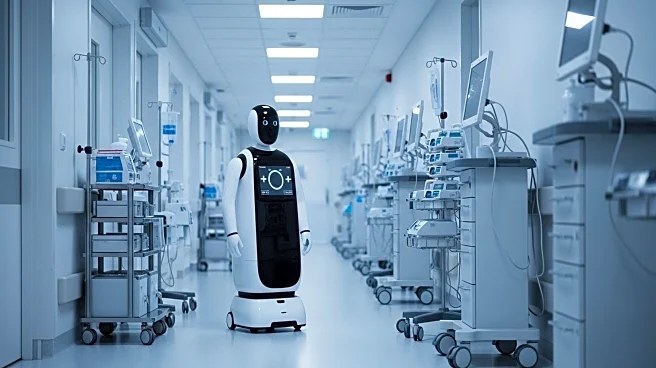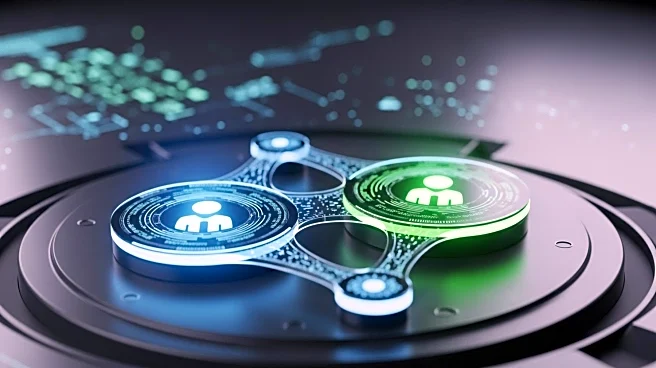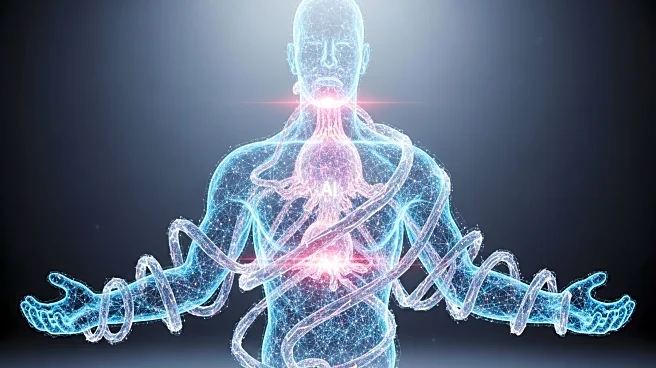What's Happening?
A new development in wearable biosensing technology has emerged with the integration of a self-confined tetrahedral DNA circuit designed for high-fidelity chronic wound monitoring. This system incorporates a multimodal biosensing array and a miniaturized flexible printed circuit board (FPCB) for signal processing and wireless communication. The biosensor is capable of detecting inflammatory cytokines and growth factors crucial for wound healing, such as TNF-α, IL-6, TGF-β1, and VEGF. The innovation lies in the DNA-based signal amplification strategy, which enhances sensitivity without the need for large instruments or high temperatures, making it suitable for continuous bedside monitoring. The system is designed to be breathable, mechanically stable, and capable of autonomous operation directly at the wound site.
Why It's Important?
This advancement in biosensing technology is significant for the healthcare industry, particularly in the management of chronic wounds. The ability to monitor wound healing in real-time with high sensitivity can lead to better patient outcomes by enabling timely interventions. The integration of DNA amplification technology into wearable devices represents a leap forward in personalized medicine, allowing for more precise monitoring of wound healing stages. This could reduce healthcare costs by minimizing the need for frequent hospital visits and enabling remote patient monitoring. The technology also addresses the need for non-invasive, continuous monitoring solutions in clinical settings.
What's Next?
The next steps involve further clinical trials to validate the efficacy and safety of the biosensing system in diverse patient populations. There is potential for the technology to be integrated into existing healthcare infrastructures, which would require the development of standardized data formats and user-friendly interfaces. The success of this technology could lead to broader applications in other areas of healthcare monitoring, such as diabetes management and infection control. Stakeholders, including healthcare providers and medical device manufacturers, may need to collaborate to ensure seamless integration and adoption of this technology.
Beyond the Headlines
The development of this biosensing technology raises important considerations regarding data privacy and security, as continuous monitoring generates significant amounts of personal health data. Ethical guidelines and robust data protection measures will be essential to safeguard patient information. Additionally, the technology's ability to operate autonomously and without external reagents highlights a shift towards more sustainable and cost-effective healthcare solutions. This innovation could also drive further research into the use of DNA-based technologies in other medical applications, potentially leading to new diagnostic and therapeutic tools.

